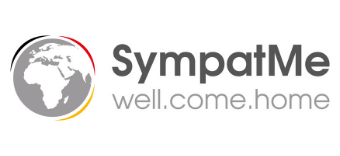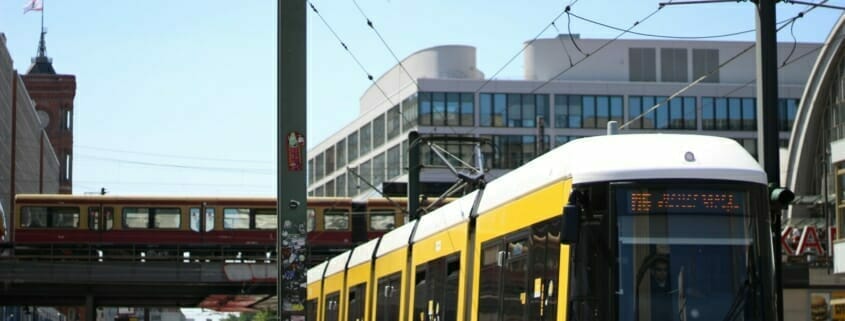Public transportation in Germany
Mobility in Germany: Are buses and trains an alternative to cars?
The diesel driving bans are not the only reason other means of transport are coming into focus as an alternative to the car. The uncomplicated accessibility of doctors, schools, and supermarkets affects the regions’ equal living conditions. Rural areas, in particular, face the challenge of how to ensure local mobility—a summary of current facts and good project examples.
Seventy million people live within a linear air distance of 600 meters to the nearest bus stop or 1.2 kilometers to the nearest train station with at least 20 travel options. However, what sounds good at first glance means in practice: 88 percent of the population can use local public transport (ÖPNV) once per hour between 7 a.m. and 5 p.m. It does not cover the Sunday excursion because the frequency only refers to working days.
As some studies have shown, uncomplicated mobility is not guaranteed in many places.
45 minutes to the center by public transport: Possible (almost) everywhere
The average travel time to the nearest city center is an essential criterion for the quality of public transport connections. The accessibility of the workplace, educational institutions, or medical care can depend on this. Ninety-five percent of the population can reach the nearest center in 45 minutes by bus or train.
However, public transportation in urban and rural areas is not the same. In sparsely populated rural counties, just under 60 percent have access to good public transit. But 12 percent of the population, mainly in peripheral rural areas, see no alternative to their car in their region.
By comparison, almost every inhabitant of large cities have access to public transportation. Only 16 percent of the population can quickly reach a streetcar or subway within walking distance of 600 meters.

Traveling with the Deutsche Bahn
Deutsche Bahn AG is a federally owned mobility and transport group. It connects German cities and rural regions with each other. Deutsche Bahn offers the BahnCard. This is a discount card for people who travel a lot by train. Commuters, for example. By buying a BahnCard you can save up to 50% on the fare. You can choose between the BahnCard 25 and the BahnCard 50.
A BahnCard 25 often pays for itself from the first time you use it. It saves you 25% on every ticket – whether from Berlin to Munich, Cologne to Stuttgart, or Bremen to Amsterdam. With the Bahncard “Europe Specials” you can save extra money when you travel from Germany to European countries.
Buy Bahncard 50 if you take the train regularly. Here you get off 50% on every train journey!
How it works
- Buy a Bahncard 25 or Bahncard 50.
- Book your train ticket & apply Bahncard discount.
- Save money & safe travels!

Traveling with Flixbus
Flixbus is the largest and most renowned bus travel company in Germany. You can travel to 2500 destinations in 40 countries by long-distance bus. But also within Germany, Flixbus is a great alternative to the train or car.
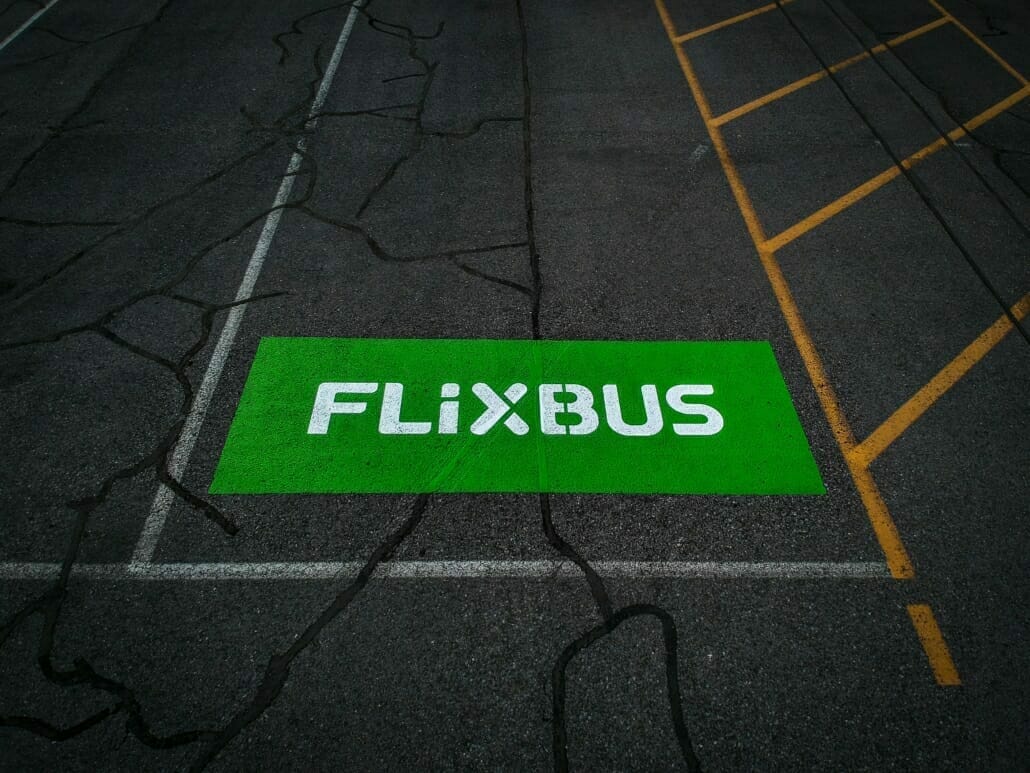
You would like to visit your family, plan a trip to the mountains or just want to take a break from everyday life? FlixBus combines mountains with the sea. You can even explore Europe with the long-distance bus. In addition to Germany, there are also numerous destinations in Austria, the Netherlands and Italy, as well as Denmark, France, Croatia and the Czech Republic, which are served by Flixbus. You can’t travel cheaper within Germany and Europe. There are already bus tickets from 5€
Your advantages:
- Free WLAN during the journey.
- Seat guarantee
- Flexible booking and rebooking
- 1 hand luggage and 1 piece of luggage included
- Power sockets
- Snacks and drinks
Check out the offers, it’s worth it!
In rural regions a car is standard in Germany

The excellent accessibility of public transport is also reflected in the choice of vehicle. In urban areas, up to one-fifth of trips are made by public transport, while in rural regions, the share of the total traffic volume is only 5 to 7 percent. A high degree of car orientation is the rule here. Ninety percent of households have at least one car outside the cities. And automobility continues to grow here.
Slight increase in use of public transport
After all, 39 kilometers are traveled daily per person in Germany. If we look at the development of mobility in Germany since 2002, we see that public transport has experienced a slight increase.
Nationwide, one in ten journeys is currently made by public transport, and in 2002, it was still one in twelve trips. The bicycle is also a mobility winner, with its share of all journeys rising from 8 to 11 percent since 2002. Cars account for just under 60 percent of trips in Germany, as the BMVI study “Mobility in Germany 2017” shows.
Public Transportation in Germany
From June 2016 to September 2017, around 155,000 households nationwide were surveyed about their mobility. The previous surveys took place in 2002 and 2008. The data from the study conducted by the Federal Ministry of Transport and Digital Infrastructure (BMVI) are an essential basis for transport planning and the design of transport policy in Germany. > to the study
But how will this change in the future? The car is no longer as significant a status symbol for the younger generations, while the older generation’s fondness for cars remains unbroken.
Good practice for better mobility
Ensuring mobility is an essential part of providing public services that municipalities must provide. The nearest doctor, supermarket, or leisure facility must be accessible without a car. But conventional scheduled transport is no longer considered viable in many rural regions. But they already exist, the innovative forms of mobility in Germany’s areas.
Community buses being used in a variety of ways
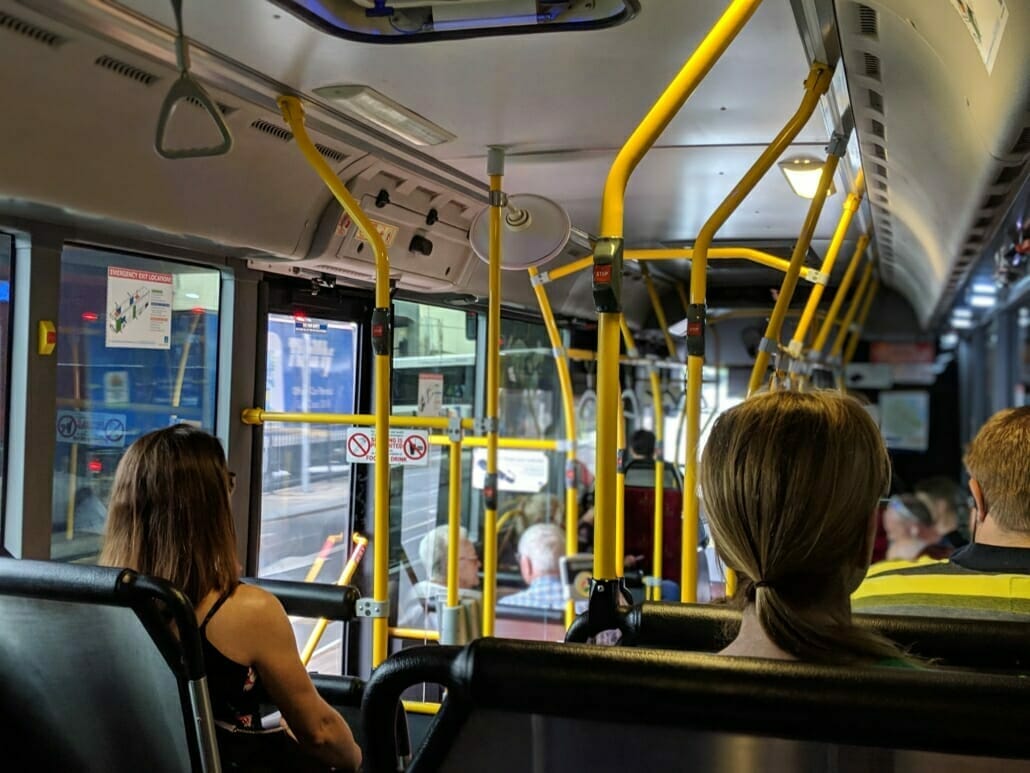
With Kita-Mobil, children in the Beetzendorf-Diesdorf municipality in Saxony-Anhalt are taken directly from their front door to daycare centers. At the same time, the Kombibus in the Uckermark region transports goods and passengers.
The volunteer drivers of the Schüttorf-Ohne-Wettringen citizens’ bus travel between two communities in North Rhine-Westphalia and Lower Saxony. The logistics system also hands medicines directly at the bus stop or village store. The Zahnarztmobil Osterwieck in Saxony-Anhalt also provides medical care for elderly, immobile patients.
Integrating private transport and public vehicle capacities
Linking local public transport and private cars is the NVV-Mobilfalt concept for rural regions in Hesse. In the Vogelsberg region of Hesse, e-mobility is being tested in practice as part of “village electric car-sharing.” It is intended to reduce the trend toward second and third cars in the region.
In the “Mobility Resource Management Central Lower Saxony (MOREMA)” project, unused or underused public and semi-public vehicle capacities in 16 municipalities are to be activated for alternative public transport. These include, for example, fire department minibusses.
Overcoming difficulties in accessibility
In the district of Borken in North Rhine-Westphalia, “MObile VIElfalt” (Mobile Diversity) is being used to connect small communities to the centers better. “Mobisaar – Mobility for All” is working to ensure that people with limited mobility can use buses and trains in rural areas of Saarland.
In the Schaumburg district of Lower Saxony, the mobility of young people and senior citizens is also ensured outside regular public transport times with the Fifty-Fifty Taxi and Senior Citizens’ Taxi.
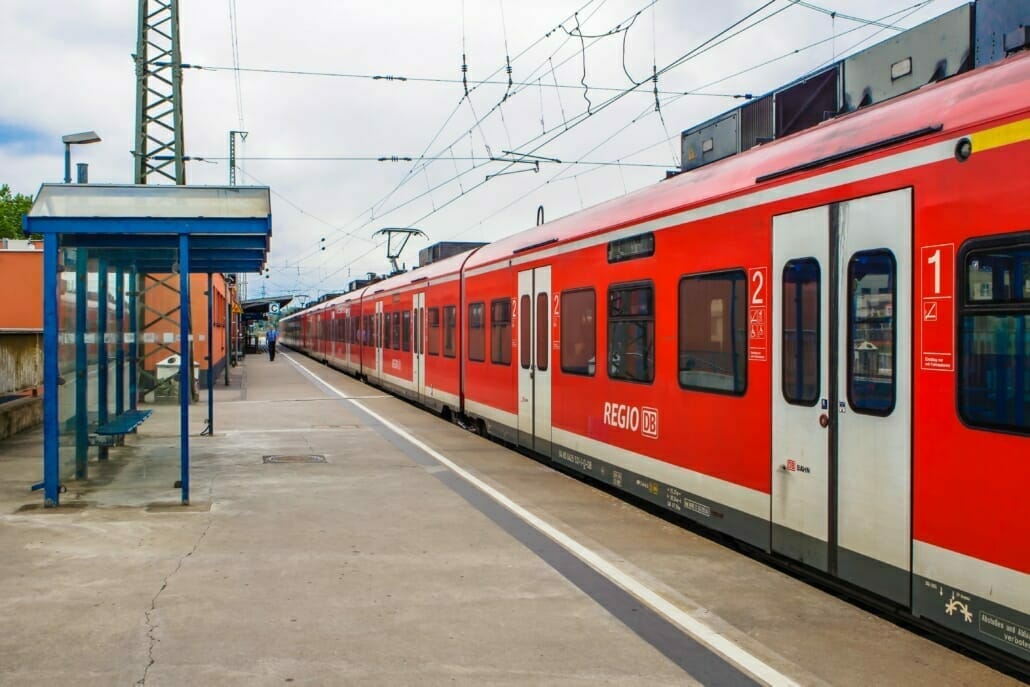
What can we learn from abroad
Germany is not the only country with good examples of mobility; Europe is also facing the challenge of ensuring mobility in rural areas.
In sparsely populated southeastern Finland, the Mallu Bus operates as a mobile health center with broadband access along a fixed route, stopping every other day in each of the eight participating communities.
In 40 communities north of Luxembourg, the slow bus operates as a “call bus.” With the help of a computer system, not only are registrations for trips taken but routes have also been calculated that cover the travel wishes of as many people as possible with the same trip.
Mobility is an essential topic in the demographic strategy
In an interview with the demography portal, State Secretary Kerber assigns mobility a key role in equal living conditions in the regions. The German government’s demographic policy will focus more on “equal living conditions in the coming years.” They are also a fundamental goal of the federal government’s demographic strategy.
The model project “Securing long-term supply and mobility in rural areas,” carried out from 2016 to 2018, accompanied the dialog process on the demographic strategy as a practical project. The 18 model regions launched more than 40 initiatives to improve mobility.
You need to load content from reCAPTCHA to submit the form. Please note that doing so will share data with third-party providers.
More Information